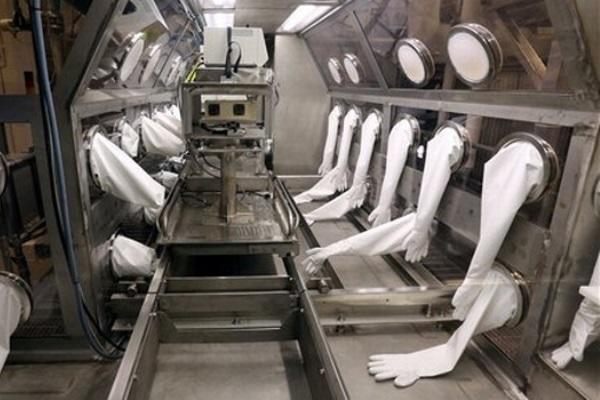The U.S. Defense Department on Thursday confirmed the live Anthrax samples the Army mistakenly shipped around the world was the same virulent strain used after the Sept. 11, 2001, terrorist attacks.
Over the past decade, live samples of the bacterium known as Bacillus anthracis that originated from the Army's Dugway Proving Grounds in Utah were inadvertently mailed to 86 public and private laboratories in the U.S. and additional facilities in seven other countries, according to a Pentagon review released Thursday afternoon.
The samples were from the so-called Ames strain, a particularly virulent form of the bacteria used in the 2001 Anthrax attacks. After letters containing the substance were sent to the offices of news media and U.S. lawmakers, five people were killed and 17 others were infected. Bruce Ivans, a government microbiologist, committed suicide after authorities were preparing to charge him in the case.
"The low numbers of live spores found in inactivated DoD samples did not pose a risk to the general public," the Pentagon review concluded. "Nonetheless, the shipment of live BA samples outside of the select agent program restrictions (at any concentration) is a serious breach of regulations."
Countermeasure Program
The U.S. military reportedly ended its biological warfare program in the 1960s, but it continues to work on a countermeasure program to protect troops from the deadly organisms. Thus, it regularly ships inactivated biological materials for research, development, testing, and evaluation to industry, academia, and other federal laboratories.
The recent shipment that launched multiple federal investigations occurred April 20, when an Anthrax sample that was thought to be inactivated, or killed, was routed through the Edgewood Chemical Biological Center in Maryland and forwarded to six companies, the review stated. One of the firms sent it to a subcontractor, which tested the sample, found live bacteria growing and contacted the Centers for Disease Control and Prevention, it stated.
"This shipment was sent to support a DoD effort to develop a new rapid field-based test to identify biological threats in the environment," according to the document.
Numerous Locations Involved
At least 20 states received live anthrax samples, including California, Utah, Texas, Tennessee, Virginia, Massachusetts, Wisconsin, Maryland, New Jersey, New York, Delaware, Washington, Illinois, Florida, Arizona, Ohio, North Carolina, Rhode Island, Pennsylvania and Mississippi.
In addition to the U.S., countries that received the samples include South Korea, Australia, Britain, Canada and Japan.
Ten soldiers and five airmen were among 22 personnel at Osan Air Base in South Korea who were treated with antibiotics as a precaution after their possible exposure to anthrax, the Pentagon said in May.
There were "no suspected or confirmed cases" of anthrax among the 15 service members, four contractors and three civilian personnel at Osan, but all were taking the antibiotic Ciproflaxin, of Cipro, as a precaution, Army Col. Steve Warren, a Pentagon spokesman, said at the time.
The Defense Department has issued a moratorium on further shipping of Anthrax samples and is reviewing its irradiation procedures and protocols for killing the material.
Accountability to be Assessed
"A key finding by the committee is that there is insufficient technical information in the broader scientific community to guide the development of thoroughly effective protocols for inactivation of spores and viability testing of BA," the review states. "This has contributed to the creation of protocols that do not completely or permanently sterilize BA with gamma irradiation. The absence of this critical information is a scientific community-wide problem and needs to be addressed with irradiation standards and viability testing procedures."
During an afternoon press conference at the Pentagon, Bob Work, deputy defense secretary, said the irradiation protocols used by officials at Dugway were largely to blame for the incident and that there were "no findings of malfeasance or wanton misuse of protocols."
Even so, Frank Kendall, the Pentagon's top weapons official, acknowledged that Dugway officials at first incorrectly reported that just 2-3 percent of the Anthrax samples tested positive for living organisms in verification testing. The actual figure was closer to 30 percent -- a level that someone should have noticed, he said.
"That's a significant difference," he said. "The technical leadership at Dugway should have understood that."
Kendall said individuall accountability will be assessed by a formal investigation, perhaps by the Pentagon's inspector general. "People deserve due process," he said when asked why nobody has yet been held responsible in the matter. "We didn't want to leap to judgment."
--Richard Sisk contributed to this report.
--Brendan McGarry can be reached at brendan.mcgarry@military.com





























